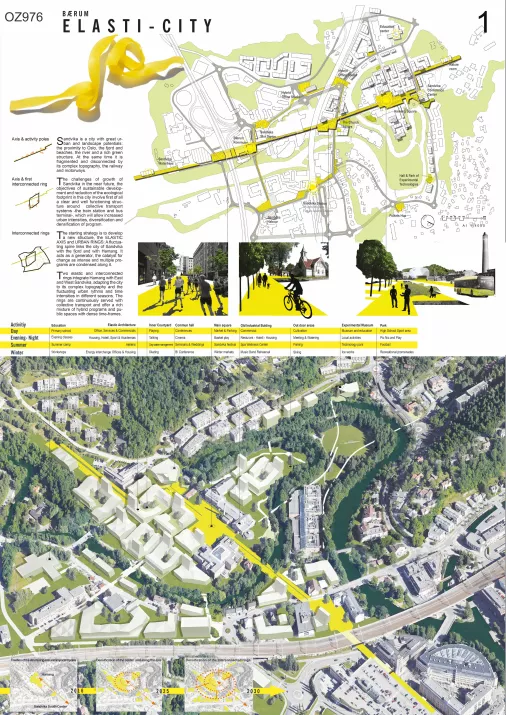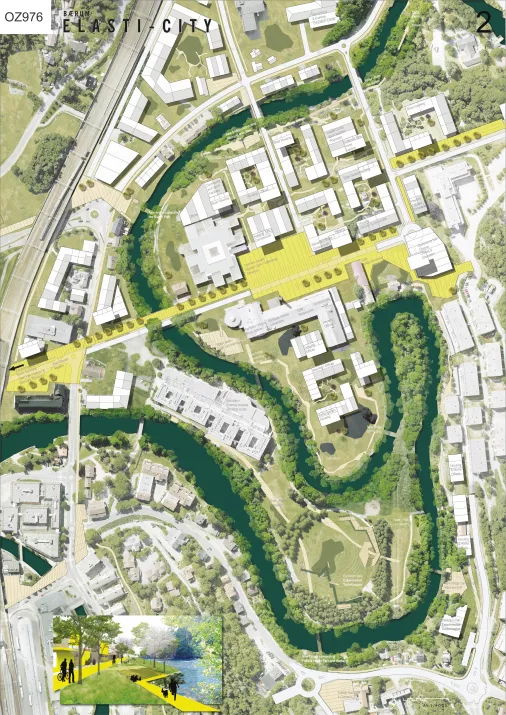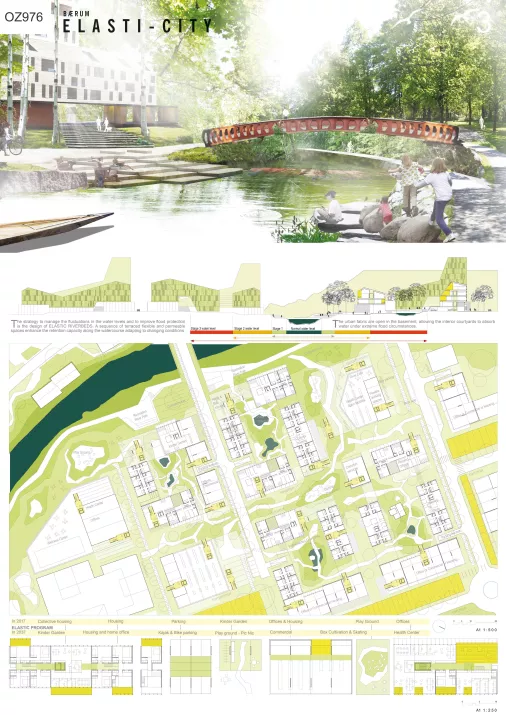Project:
Elasti-City
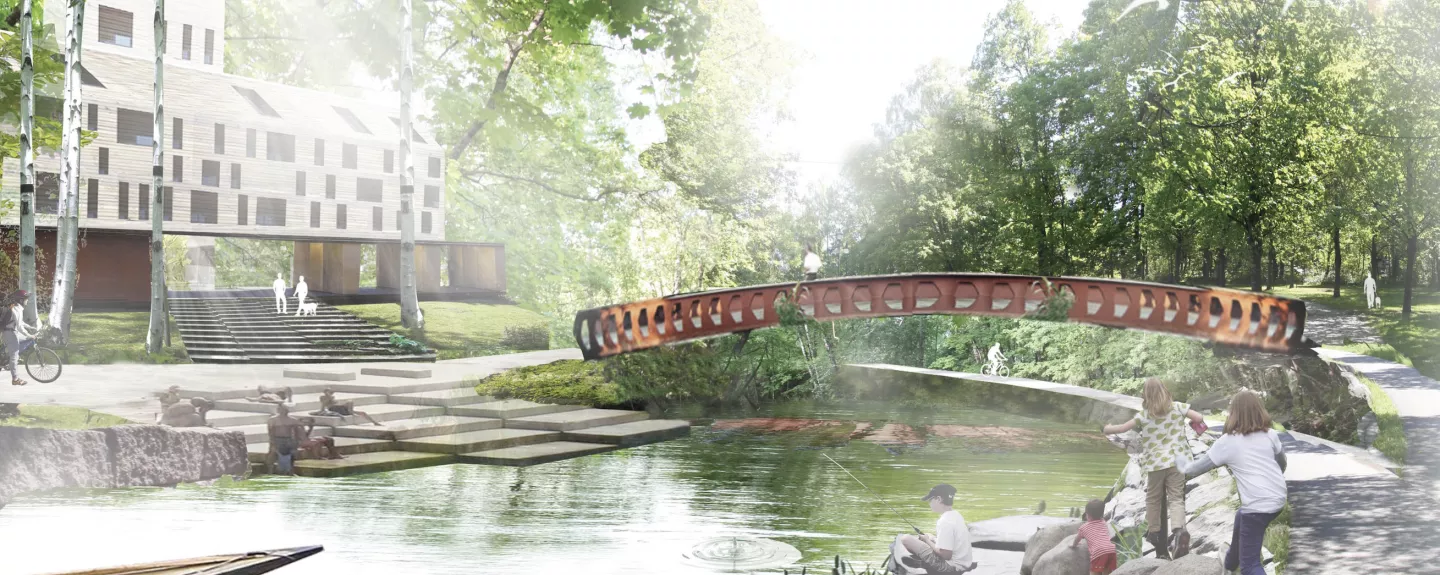
About
-
The main goal in this project is to bind together a rich but complex milieu: the different city districts, topography and nature, history and expanded timeframes…
ELASTIC AXIS is a fluctuating spine linking Hamang with the city of Sandvika and the fjord. Two interconnected rings, integrating public transport, a mixture of programs and public spaces, bind Hamang to East and West Sandvika.
ELASTIC RIVERBEDS is the design strategy for managing the fluctuations in water levels and improving flood protection. Terraced sequences of flexible and permeable spaces enhance retention capacity along the watercourse, the adaptability to changing conditions. The older buildings on the site accommodate new uses and the new mixed scale blocks permit future adaptation to density and programmes. -
Elasticity deals with the necessity of density in the area by proposing a building typology that solves both collective and individual programs. It is one of the few proposals that have been appreciated by the municipality in terms of the expected urban density. Kjørbotangen is kept as a natural and recreational area without built structures, a fact that has been also valued.
Nevertheless, “Elasticity” relies more on architectonic solutions than in urbanistic ones. This is the project’s strength and weakness. Although robust, the architectural proposal is formulaic and generic.
Programmatically it distributes mixed uses throughout the big semi-closed blocks, deploying a well-developed overall section that relates the river banks with the interior of the blocks. This allows for a public solution for both the river limits and the collective interior spaces, and has been a key element for the jury in selecting the project as runner up. Nevertheless, from an urban point of view, although it proposes an adequate connection with the South Sandvika Center, the project is too straightforward and the organization does not properly value the spaces in between the blocks outside the architectural objects.
-
Team Representative: Elisabeth Sjodahl (SE) – architect
Contributor: Alejandro Navarrete (ES) – architectWORKSONLAND, Grini Mølle Grinidammen 10, 1359 Eiksmarka – Norge
+47 99 86 67 34 – elisabeth.sjodahl@gmail.com – www.worksonland.com
E. Sjodahl and A. Navarrete
Team interview
1. How did you form the team for the competition?
This Europan competition was made with a small team composed of Elisabeth Sjodahl as author and Alejandro Navarrete as contributor.
2. How do you define the main issue of your project, insisting on how you answered on this session main topic: adaptability and urban rhythms?
The main goal of the project is to bind together a rich yet complex context: the different city districts, topography and nature, history and expanded time frames...
ELASTIC AXIS is a fluctuating spine linking Hamang to the city of Sandvika and the fjord. Two interconnected rings, integrating public transport, a mixture of programs and public spaces bind Hamang with East and West Sandvika.
ELASTIC RIVERBEDS is the design strategy to manage the fluctuations in water levels and to improve flood protection. Sequences of terraced flexible and permeable spaces enhance the retention capacity along the watercourse and adaptability to changing conditions. The elder buildings on site accommodate new uses and the new mixed scale blocks allow future adaptation in density and program.

3. How did this issue and the questions raised by the site mutation meet?
The question of adaptability is always present in a project where the proposal seeks an answer to the site. In this case one of the fundamental factors to take into account is the presence of water as resource and threat.
4. Have you already treated this issue previously and could you present some reference projects that inspired yours?
We dealt with the direct contact to water and its possibilities and threats in earlier projects such as the competition proposals for the harbor of Ålesund (NO) where the landscape is restructured, and the urban development of the river village Floda (SE); there, different topographical levels with different programs are elaborated in order to face the unpredictable water level. The water related works of Kelly Shannon were also of great inspiration
5. Today –within the era of an economic crisis and sustainability– the urban-architectural project should reconsider its production method in time; how did you integrate this issue in your project?
The question of time and rhythm of changes related to the economy is relative to each place. We know that there will be changes in the economy but it is always very difficult to foresee the sequences of these changes in time. In the case of urban planning the time frame is so wide that it should be able to host the unpredictable, which is a big challenge. In terms of resources the interesting thing is to make as much as possible out of as little as possible. Therefore, it is important to read the site carefully in order to take advantage of what is already there and include it in the project.
This project seeks to give a long time perspective in its proposal with a clear structure that allows changes over time and include the qualities of the Sandvika river.
6. Is it the first time you have been awarded a prize at Europan? How could this help you in your professional career?
Elisabeth Sjödahl was awarded a prize at Europan 6 on the site of Järfälla (SE), outside Stockholm.
Related projects
-
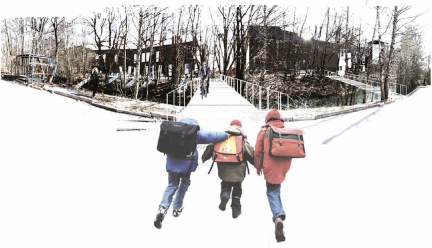
Social Riverscape
Built environment and nature come together, with a weave of green connections, establishing a new…
-

Hamang Riparian Zone
The urban form of Hamang will adapt to the river geomorphology, rather than the more typical urban…
-

Elasti-City
The main goal in this project is to bind together a rich but complex milieu: the different city…
